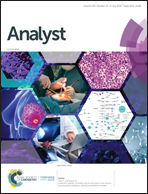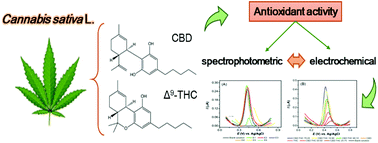 “One of the most promising economic perspectives of hemp production chain is female inflorescence valorization, despite there being actually no chemical composition or biological data from water fraction. In this context, the focus of this study is the evaluation of protective effects related to hemp water flower extracts from four commercial cultivars (Futura 75, Kc virtus, Carmagnola Cs and Villanova). We evaluated the phytochemical profile through validated spectrophotometric and HPLC methods. Then, we studied the biological activity on C2C12 and HCT116 cell lines, and in an ex vivo experimental model of ulcerative colitis, constituted by isolated LPS-stimulated colon. Particularly, we assayed the blunting effects induced by hemp water extract treatment on LPS-induced levels of nitrites, malondialdehyde (MDA), prostaglandin (PG)E2and serotonin (5-HT). All tested cultivars displayed similar total phenolic and flavonoid profile. However, Futura 75 water extract displayed a better antioxidant and anti-inflammatory profile. Considering this, Futura 75 extract activity has been subsequently assayed on bacterial and fungal species involved in ulcerative colitis, finding a significant inhibition on C. albicans and selected Gram positive and negative bacterial strains.
“One of the most promising economic perspectives of hemp production chain is female inflorescence valorization, despite there being actually no chemical composition or biological data from water fraction. In this context, the focus of this study is the evaluation of protective effects related to hemp water flower extracts from four commercial cultivars (Futura 75, Kc virtus, Carmagnola Cs and Villanova). We evaluated the phytochemical profile through validated spectrophotometric and HPLC methods. Then, we studied the biological activity on C2C12 and HCT116 cell lines, and in an ex vivo experimental model of ulcerative colitis, constituted by isolated LPS-stimulated colon. Particularly, we assayed the blunting effects induced by hemp water extract treatment on LPS-induced levels of nitrites, malondialdehyde (MDA), prostaglandin (PG)E2and serotonin (5-HT). All tested cultivars displayed similar total phenolic and flavonoid profile. However, Futura 75 water extract displayed a better antioxidant and anti-inflammatory profile. Considering this, Futura 75 extract activity has been subsequently assayed on bacterial and fungal species involved in ulcerative colitis, finding a significant inhibition on C. albicans and selected Gram positive and negative bacterial strains.
Concluding, our results support the potential efficacy of hemp inflorescence water extracts in managing the clinical symptoms related to ulcerative colitis.”
https://www.sciencedirect.com/science/article/pii/S0278691519300468?via%3Dihub


 “Heavy metals pollution affects the nutritive value of fish.
“Heavy metals pollution affects the nutritive value of fish. “Cannabidiol (CBD), a non-euphorigenic compound derived from
“Cannabidiol (CBD), a non-euphorigenic compound derived from  “Cognitive impairment is a major source of disability in schizophrenia and current antipsychotic drugs (APDs) have minimal efficacy for this symptom domain.
“Cognitive impairment is a major source of disability in schizophrenia and current antipsychotic drugs (APDs) have minimal efficacy for this symptom domain.
 “Herein, we report the antioxidant activity of
“Herein, we report the antioxidant activity of 
 “Currently, there are no approved pharmacotherapies for addiction to cocaine and other psychostimulant drugs. Several studies have proposed that
“Currently, there are no approved pharmacotherapies for addiction to cocaine and other psychostimulant drugs. Several studies have proposed that